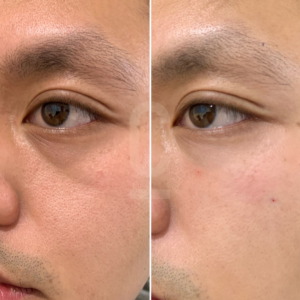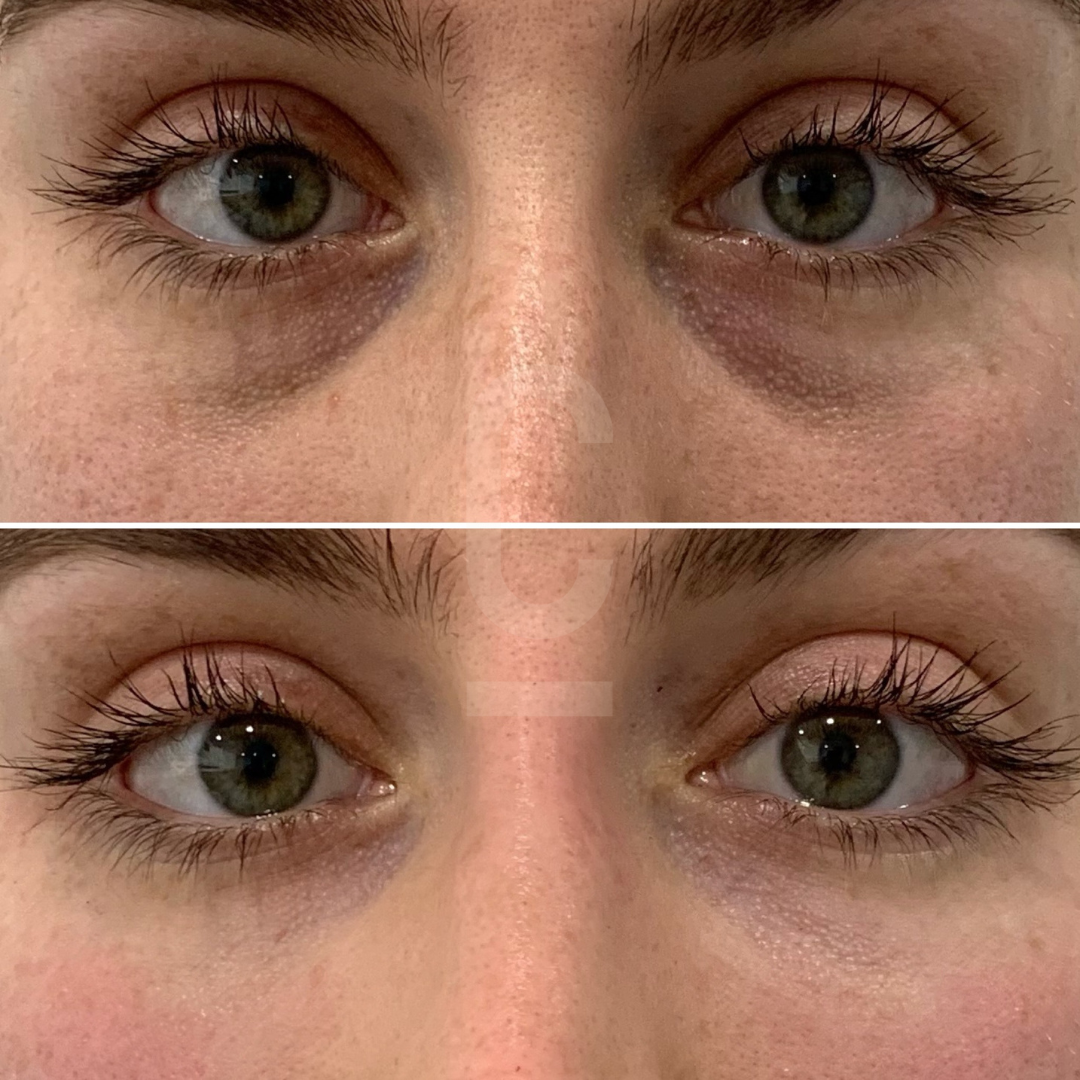Bothered by under eye hollows? Dark circles making you look constantly tired? Wanting to refresh your appearance and not look like you’ve had work done? Tear troughs (the correct term for the hollowing that occurs under your lower eyelids) are one of the most common concerns people have about their appearance. Tear troughs can leave you looking tired, aged and gaunt, and can leave others wondering why you always look tired.
While a small tear trough can be a natural feature for many people, others have naturally deep tear troughs, or develop them as they age or after significant weight loss.
One of the best treatments to improve the appearance of tear troughs is dermal filler injections. But not everyone is suitable. If you are considering tear trough filler and are wondering what it’s like to get your tear troughs filled, then we’ve got everything you’ll need to know.
What are tear troughs?
The tear trough is the area under the eye, where the lower eyelid meets the cheek. It is a natural depression in the face that can become more pronounced with age, resulting in a tired or sunken appearance.
What causes tear troughs?
Tear troughs can become more visible as we age due to a loss of volume in the area and sagging of the skin. This can occur due to a variety of factors, including genetics, environmental factors such as sun exposure, and lifestyle habits like smoking. When the tear troughs become more pronounced, it can create the appearance of dark circles or bags under the eyes making you look tired.
Am I suitable to have my tear troughs filled?
While you’ll need an appointment with one of our experienced practitioners to determine your suitability, many people are great candidates to have their tear troughs filled. Some of the things we look for when assessing your suitability for tear trough filler include:
- General health: People in good overall health without significant medical illnesses and who lead a healthy lifestyle are better candidates.
- Skin quality: People with better skin elasticity are more suitable to have their tear troughs filled. Those with thin or sagging skin may not be good candidates.
- Local swelling: People prone to under eye swelling are not great candidates for having their tear troughs filled. This is because the dermal filler used to fill the tear troughs can attract water to the area, worsening swelling.
How are tear troughs filled with injections?
Tear trough filler is typically performed by a medical professional. The procedure is generally quick and only takes about 10-20 minutes to complete.
Before the procedure, the skin around the eyes will be cleaned, and may be numbed if required. Dermal filler, most commonly one based on the sugar molecule known as hyaluronic acid, will be injected into the tear trough using either very fine needles, a blunt instrument known as a dermal filler cannula or a combination of the two.
The filler will be carefully injected into the appropriate areas in order to achieve the desired results. The area may also be massaged to help distribute the filler evenly.
After the procedure, you may experience some swelling and bruising in the treated area, which should resolve within a few days. You may also experience some slight discomfort or pain, which can be managed with over-the-counter pain medication.
Overall, tear trough filler is a relatively quick and simple procedure that is used to add volume to the tear trough area and improve the appearance of dark circles or bags under the eyes. Many people find the procedure to be a quick and effective way to achieve their desired appearance. Importantly, due to the delicate nature of the tear trough, it is always recommended to under-correct. Overfilling can increase the risk of side effects. Most professionals advise that you can expect up to a 50% improvement in your tear trough without significantly increasing the risks. Furthermore, correcting the supporting structures around the tear troughs such as the cheeks, brows and temples can help to further improve the tear trough. This works because the lower eyelid has a complex structure that depends on the support of the surrounding areas of the face. Dermal filler can be used to provide support in these areas if needed.
Can tear trough filler go wrong?
All medical procedures carry risks. Ensuring that you are treated by an experienced and qualified medical professional is the best way to minimise the chance of side effects from having your tear troughs filled.
Some common side effects of having your tear troughs filled include:
- Swelling and bruising: Swelling and bruising can occur after the procedure and should resolve within a few days.
- Pain or discomfort: You may experience some pain or discomfort after the procedure, which can be managed with over-the-counter pain medication.
- Redness and irritation: You may experience some redness or irritation at the injection site, which should resolve within a few days.
- Allergic reactions: There is a small risk of an allergic reaction to the filler, which may cause redness, itching, or swelling.
- Asymmetry: The results of the procedure may not be perfectly symmetrical, which may be able to be corrected with additional treatments. Perfect symmetry is often not a realistic outcome as the face is not symmetrical to begin with.
- Persistent swelling and lumpiness: If too much product has been injected, the wrong type of filler has been used or the filler has been placed too shallow beneath the skin then you are likely to experience lumps and swelling that do not resolve. In such cases, you may need to consider dissolving tear trough filler.
- Skin discolouration: If you had your tear troughs filled incorrectly, or have had too much tear trough filler over the years causing surfacing and migration, you may experienced blue discolouration of your tear troughs. This is known as the Tyndall effect, and may need to be treated by tear trough filler dissolving.
Overall, tear trough filler is a safe and effective procedure with minimal side effects. However, it is important to discuss any concerns you have with a medical professional before undergoing the procedure.
Tear trough filler, before and after results.

The above photo shows a male patient who had his tear troughs filled, before and after.

This female patient had her tear troughs filled with dermal fillers, before and after.


